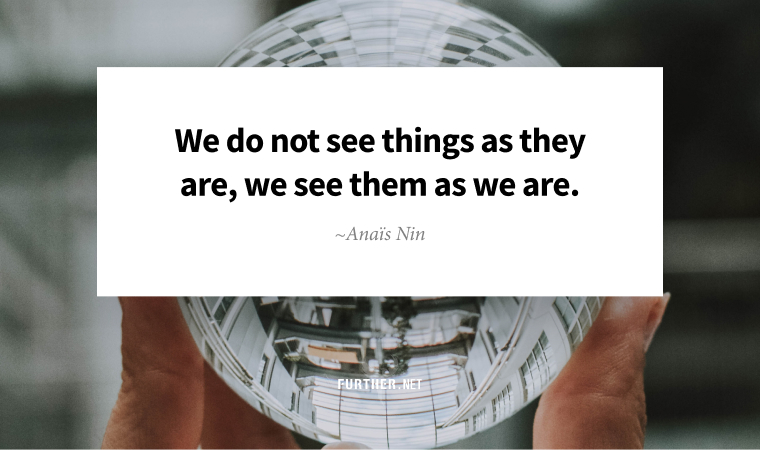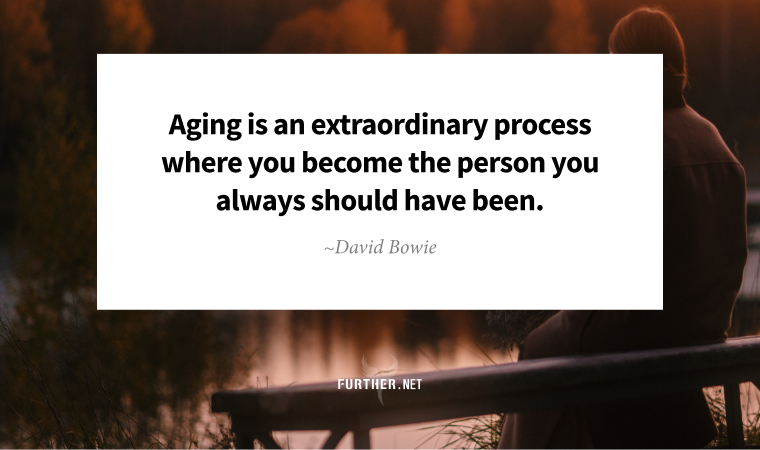
While Brian is busy exploring the Amazon in Peru, I’m taking over his usual spot and leading you on a different kind of adventure: a journey deep into the new science of consciousness.
Fortunately, we don’t need a plane to transport us. We have the vehicle we need — midlife curiosity about who we are — and a provocative new book, Being You, by renowned neuroscientist Anil Seth.
Human’s quest to understand consciousness traverses many disciplines, from philosophy to religion, psychology, science, and the arts. There are some stand-out moments, like René Descartes’ 16th-century take:
I think, therefore I am.
That sets up the idea that our brains are like machines. In Descartes’ opinion, our ability to think and feel elevates us above the so-called bête-machines or “beast machines” — animals, which he believed lacked rational capabilities.
A couple of centuries later, French philosopher Julien Offray de La Mettrie argued that the mind and life of all living organisms, including humans, aren’t independent at all. They’re interdependent. This is a philosophical precursor to Seth’s scientific work — swap the word “consciousness” for “mind,” and that’s Seth’s 21st-century version of the beast machine theory.
Our conscious experiences of the world around us, and of ourselves within it, happen with, through, and because of our living bodies.
Using MRIs and other brain-mapping technology, Seth’s research focuses on how the human brain navigates reality by making predictions from signals flowing into the brain from the outside world and, perhaps in larger measure, from other “conscious content” (i.e., moods, emotions) flowing from the opposite direction.
None of the predictions your brain makes are ironclad. In fact, your mind continually scrambles to minimize the possibility of errors by making its best guess. These perceptual experiences are what Seth calls “controlled hallucinations,” and they form the basis of your sense of being.
The self is not an immutable entity that lurks behind the windows of the eyes, looking out into the world and controlling the body as a pilot controls a plane. The experience of being me, or of being you, is a perception itself — or, better, a collection of perceptions — a tightly woven bundle of neurally encoded predictions geared toward keeping your body alive.
This is where the art of being you enters, in my opinion. If your mind is constantly doing guesswork to progress from what it knows to what it believes should happen next, based on what it’s learning in the moment, then there’s room not only for error but for creativity. And choice, because as Seth points out:
We perceive the world not as it is, but as it is useful for us.
So, what’s your take on “useful”? Is it blindly following your brain’s wiring, panicking as a result of the fight-flight-freeze response, when in our modern times, this is more likely caused by a dip in the stock market than being pursued by a bloodthirsty predator? Or is it living consciously, insisting on being present, even when things are uncomfortable or unclear?
What Seth sees as the “real problem of consciousness” is all about cracking the code of the neurobiology that underlies it. This is one route to explore consciousness, but keep in mind there are others. For example, as a Vedic meditation teacher, I see consciousness as more of a body-transcendent vs. body-dependent experience. But that’s a different path and an adventure for another day.
Meanwhile, it’s worth recognizing the biggest benefit of being in an embodied state: you have the opportunity to experience the joy of discovering what’s meaningful and purposeful to you.
The science is complicated, but your journey in consciousness doesn’t have to be. Your selfhood may be body-dependent, but your inner universe can be as expansive as nature itself. The choice is yours — so make it consciously.
Being You: A New Science of Consciousness (Amazon Associates)
Down below, health coach and longevity expert Lindsay Kassem writes about the collateral beauty of aging. Plus, Brian pre-selected this week’s Flashback, and luckily it’s from the last best album by one of the few hard rock bands I’d jump to listen to.
So keep reading … and, as Brian always says, keep going.
P.S. New to Further? Join us here.
Happy Trails
If you want to be among the HROBs (Happiest Retirees on the Block), two new books from financial advisors lay out the means and traits necessary. “Hint: when it comes to happiness in retirement, it’s not just about the money.” (But you already knew that.)
Who the Happiest Retirees and Most Unhappy Retirees Are
Life in the Floss Lane
I’m a sucker for a KISS headline: any easy longevity-hacking tips, and I’m clicking. The five Harvard-backed habits aren’t new for Further readers, but don’t skip reading the bonus tips because good dental hygiene is a surprising healthspan game-changer.
The 5 Simple Habits That Can Extend Your Lifespan by Up to 10 Years
Mind the Pain
A whopping one-fifth of all adults live with chronic pain, and the culprit might be what you think. “It’s increasingly clear that chronic pain is often “neuroplastic” — generated by the brain in a misbegotten effort to protect us from danger. And that’s good news, because what the brain learns, we are discovering, it can unlearn.”
Chronic pain is surprisingly treatable — when patients focus on the brain
I Made You a Mixtape
If the word “mixtape” gave you a hit of bliss, that’s because nostalgia juices your dopamine system. Usually, here in the curated section, we’re all about personal growth. But taking a look back can help you keep going, so pop this in and enjoy:
My 80’s TV! (or 90’s if that’s more your jam)
The first two hours of MTV
4:55 mins. of midlife Nirvana
The Power of Collateral Beauty as You Age

By Lindsay Kassem
As a certified health coach, I see a lot of collateral damage in my client’s bodies, from daily fatigue, weight imbalances, and stomach issues to anxiety and depression.
In my experience, undoing that collateral damage is possible in a relatively short amount of time. By tackling the pillars of health — optimal nutrition, sleep, movement, and reducing stressors — you’ll be on the path to feeling better and living longer.
The next level is cultivating a positive aging mindset that helps you create a triumphant third act. You’ll be able to reap the benefits of collateral damage’s opposite — collateral beauty.
What is Collateral Beauty in Aging?
The Will Smith movie Collateral Beauty conveyed that beauty and love still exist even when things feel bleak. That perspective beautifully expresses how a positive outlook can help fuel longevity.
As part of my project on embracing aging, I routinely interview people in their 70s and older about what keeps them vital and purposeful. There’s one common denominator: they look for the silver lining.
Finding the good in difficult situations doesn’t come easily. The people I’ve surveyed have endured substantial hardships, whether it was a loss of a child, growing up in wartime, or withstanding an abusive relationship. And they didn’t suppress their pain either — they found ways to move through it and keep going.
According to the Journal of American Medical Association, seniors who viewed aging positively were 44% more likely to recover from a disability than those who saw the injury synonymous with being old and helpless.
In my work, I’ve found that energetic, upbeat older people don’t wallow in their incapacity — they choose to focus on what they can still do. This is collateral beauty.
Alchemy of Collateral Damage to Beauty in Aging
The “collateral damage” of aging is often deemed as sickness, decline, hopelessness, and isolation. By taking preventative measures now, you can pave the way to a happier, healthier future, transforming it into collateral beauty. This includes:
- Be your own best friend. Skip compare and despair and celebrate your growth over time.
- Respond to situations with ease. Whether through meditation, coaching, therapy, or other avenues, prioritize your emotional stability and resilience.
- Achieve self-alignment. Find ways to align your actual (inner) self and ideal self to remove internal conflict. For example, I teach a self-love meditation that integrates hypnotherapy techniques to help ingrain it in the subconscious mind.
- Nurture meaningful relationships. Eight decades of research from Harvard shows good, close relationships support longevity.
Collateral beauty can be a byproduct of aging, but it’s not random. The choice is yours to do what it takes to create and embrace the beauty of each experience at every age.
further: flashback
 Van Halen – Jump
Van Halen – Jump1984, 1984
Remember when Jump was released and all the metal heads lost their minds? OMG synthesizers, the end is nigh! Little did they know the next album would be the debut of Van Hagar. (YouTube)
further: sharing

Further subscribers earn $MOVE coin to get cool gear and special access to member-only resources simply by referring friends to join the newsletter. Get your own free weekly dose of health, wealth, travel, and happiness advice here.
Thank you for sharing Further!
